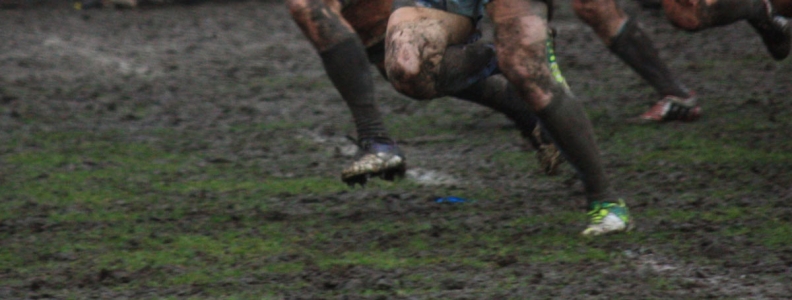
Cost Versus Quality – Do Grounds Have a Sporting Chance?
Now that it is late in July and we’ve finally had some welcome rain, the reality of sports ground management has bitten hard for many throughout Adelaide.
There is no doubt the management and quality of most turf sporting surfaces has improved over the years, but with it has come increasing expectations from end users, so at times it feels like we are simply treading water. The household lounge room is now bombarded with images of international sporting events payed on immaculate, seemingly flawless surfaces, so when the weekend warrior heads out to battle here in suburban Adelaide, they often expect the same.
The increase in professionalism in sport has had a ripple effect in other ways. Local clubs embark on training levels that resemble those of the state and national leagues 20-30 years ago. Sessions go for longer, and pre-season training demands for surfaces is increasing, with cricketers and footballers often dodging each other at each end of their season.
Many grounds now host multiple sports as a means of cost sharing the maintenance of facilities, with additional seasons and training sessions overlapping.
Once a week training for juniors is now twice a week. Clubs support sub-junior programs that used to be fulfilled by school sport, and enormous feeder programs such as Auskick see thousands of young boys and girls chasing a ball around and having a great time at least once a week.
The financial pressures faced by many sporting clubs makes every opportunity to have people at their home ground and clubrooms a necessity. The chance to run a sausage sizzle, open the bar, or sell very welcome cups of coffee to parents and family members is seen as a financial and cultural saviour for every club.
But what about the impact of these extra activities on the grounds themselves?
Have the increases in expectations and demands for our grounds seen an increase in maintenance resources? In short, no. We have seen some tremendous improvements in management practices over the past two decades, but in general our turf areas are still not being viewed as assets that needs to be carefully by the wider community. This is usually not the fault of turf managers or organisations entrusted with their management, rather a reflection of economic reality and the naivety of the wider community about the challenges of turf management. That is, what it costs to produce the quality they want.
Many of these community clubs and suburban grounds are among the most heavily utilised, and yet due to irrigation guidelines and quality standards, their ability to withstand these usage levels can be compromised, especially during winter. Most of our suburban grounds are kikuyu based, a great fit for our climate. But the management of them during summer has an enormous impact on their quality throughout winter.
Water is the biggest input we have into turf systems in our climate, and with greater scrutiny over its use, we need to be getting full value from every drop and this needs a thorough review of turf and soil management.
A recent study recommended up to 20-25 hours of use per week was the maximum sustainable for sporting grounds constructed to a high standard (i.e. good drainage, well irrigated, good turf quality etc).
Many suburban grounds would see at least this level of known usage (without taking into account casual public use), and are “constructed” on what the good earth provided!
Furthermore, grounds are now commonly being utilised seven days a week, and the limited recovery time between wear and tear quickly takes its toll. And while the deterioration of the playing surface can be unsightly, it is not the main concern.
With increased wear and loss of turf coverage comes the potential for unstable surfaces, exposure of “clumpy” pockets of grass or sprinkler heads, sharp depressions or holes, sharp hardened ridges of clay, and inconsistent surface hardness, all of which present considerable safety risks. What’s more, these hazards are capable of presenting themselves almost overnight.
The playing surface that has been tolerated in the past is less likely to be accepted into the future, and if assessment scrutiny increases, it is likely some grounds will not meet the “fit for use” brief.
Given the difficulty in finding additional space for new facilities within suburban areas and the reluctance of clubs to host events away from their home base, we need to invest more heavily in their routine annual management. In doing so, we are viewing our sporting grounds as assets, and more likely to produce sustainable quality paying surfaces that work within irrigation and safety guidelines.
My experience has been that monitoring of ground conditions is an essential starting point, but until this information is used in combination with solid agronomic programs and communication with/education of end user groups, it will rarely result in sustained improvement. What we do now has a huge impact on the surface we manage in six months’ time, and the cycle continues.
So how much is it going to cost to meet these expectations and safety requirements? The truth is, no one knows until a comprehensive review of a site and its usage is undertaken. No one product, no single treatment can solve all limitations, let alone do it overnight.
I am seeing an increasing need to work with clients and turf managers on strategic improvements to meet scheduling and financial needs, and this can work very effectively without causing any major disruption or imposing significant maintenance cost increases. Often good results can be achieved simply by spending money differently, or planning more effectively.
However, if you are expecting a ground to host 25 hours of organised use in winter on a clay loam soil with one or two fertiliser applications a year, the chances are the purse strings might have to be loosened a bit!
Our turf sporting and leisure facilities are undoubtedly an asset to communities. The future will demand that they be managed accordingly, so planning that takes into account all influencing factors is now critical if they are to have a sporting chance.
Image Credit// Sum_of_Marc

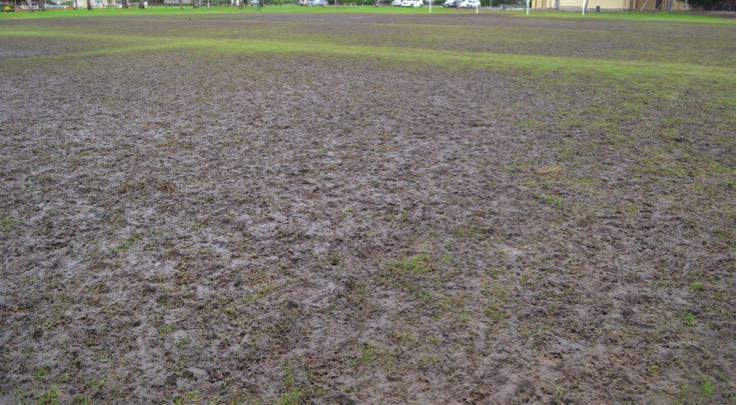
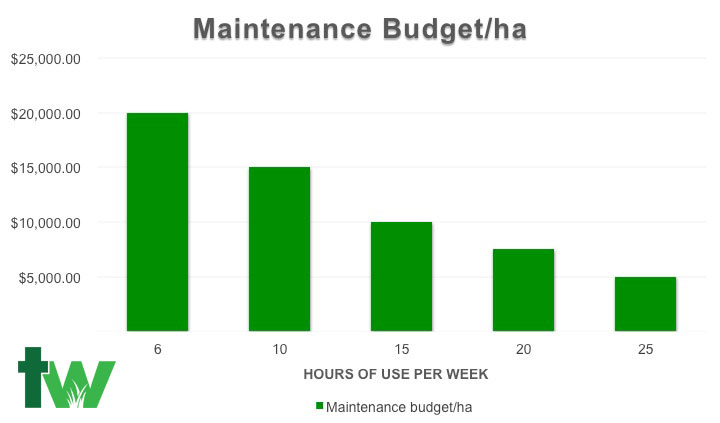
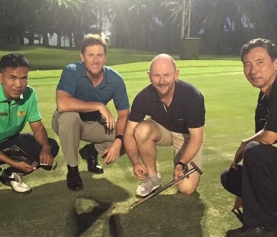
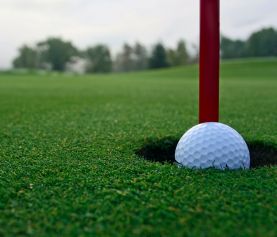
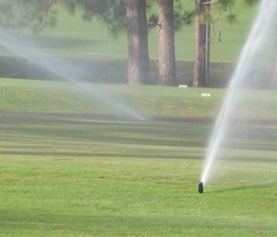





Hi Daryl
Good article
The numbers that you have on the graph and the study that you quoted – are they available in more detail?
John Neylan